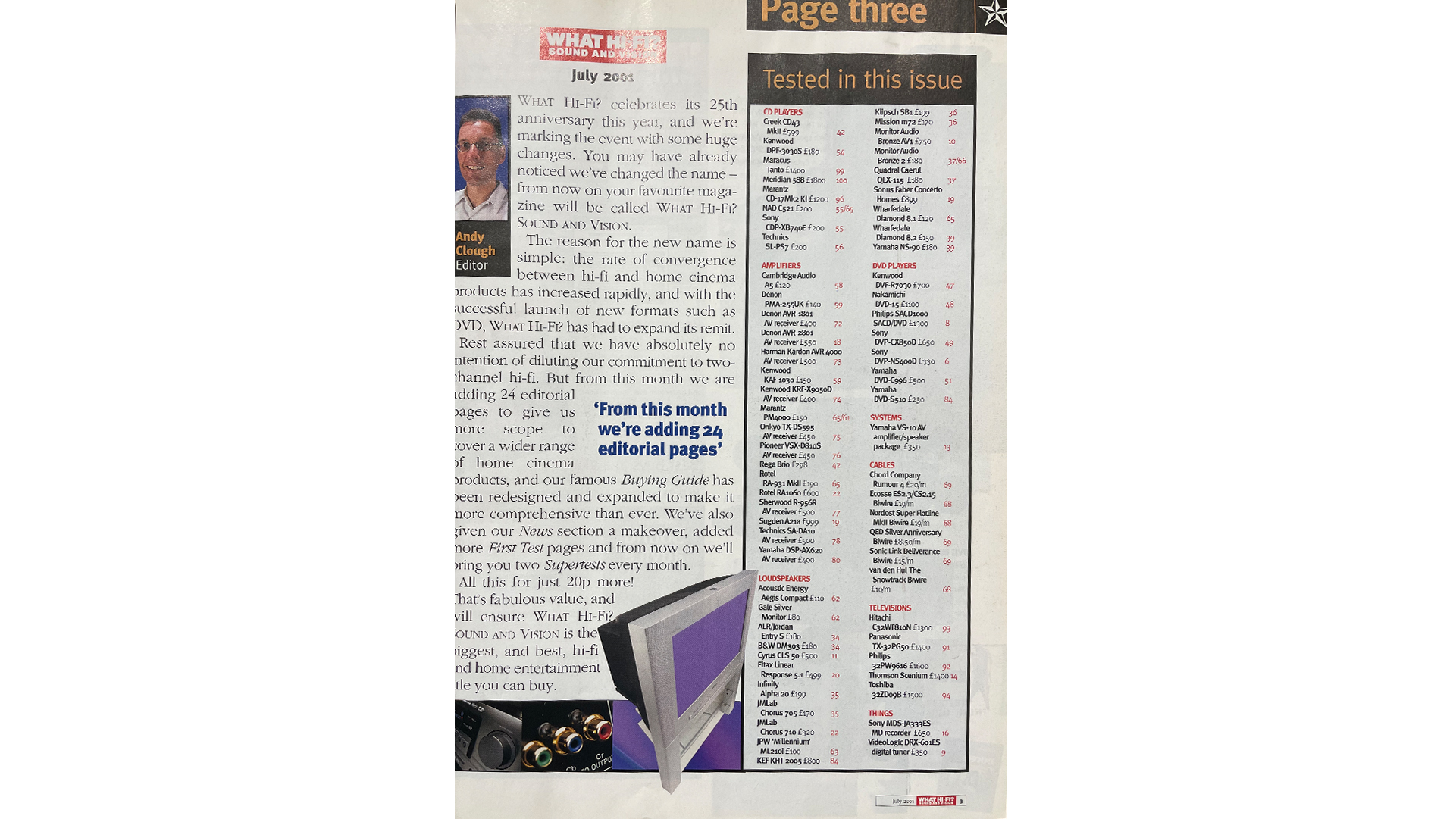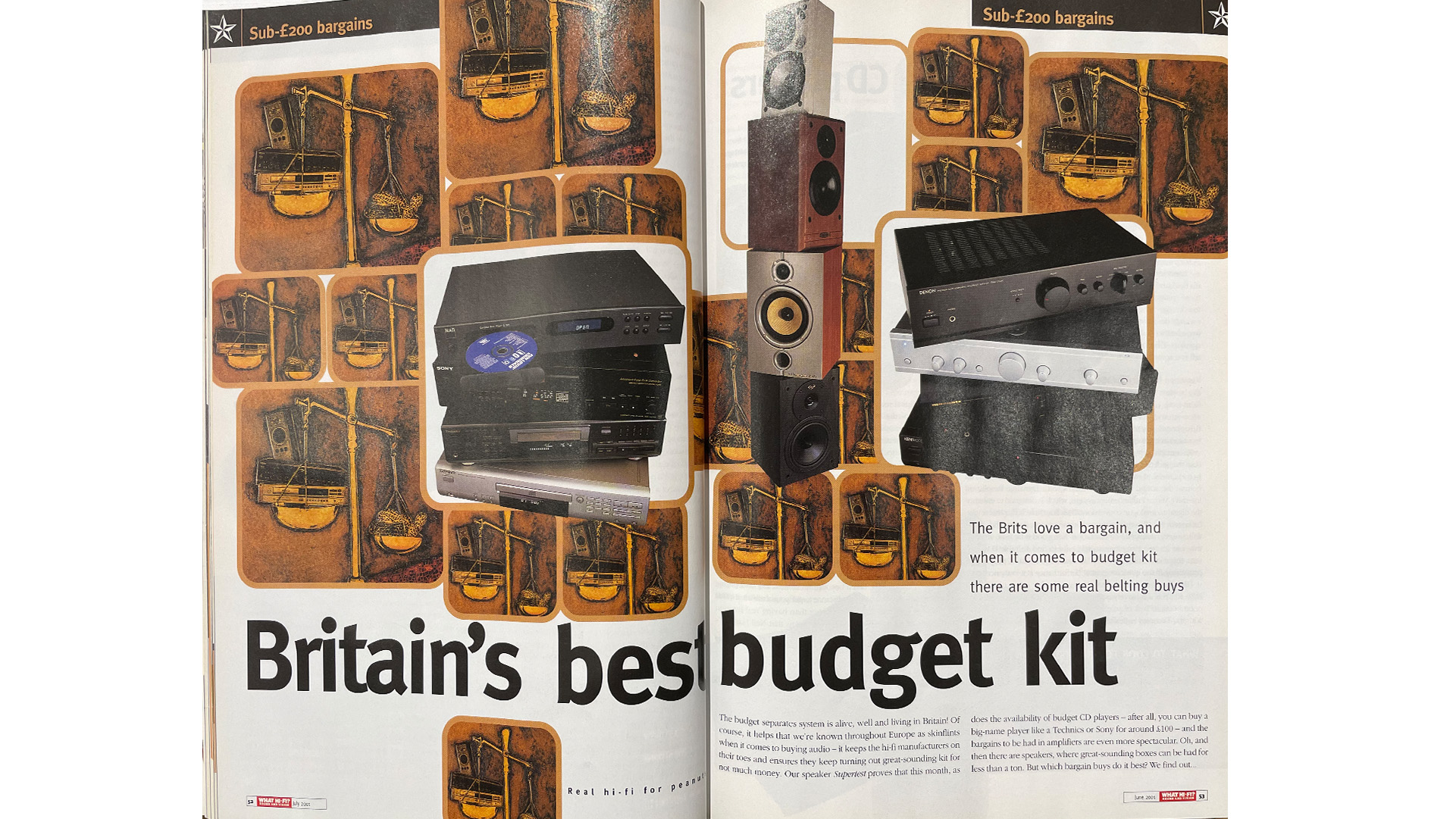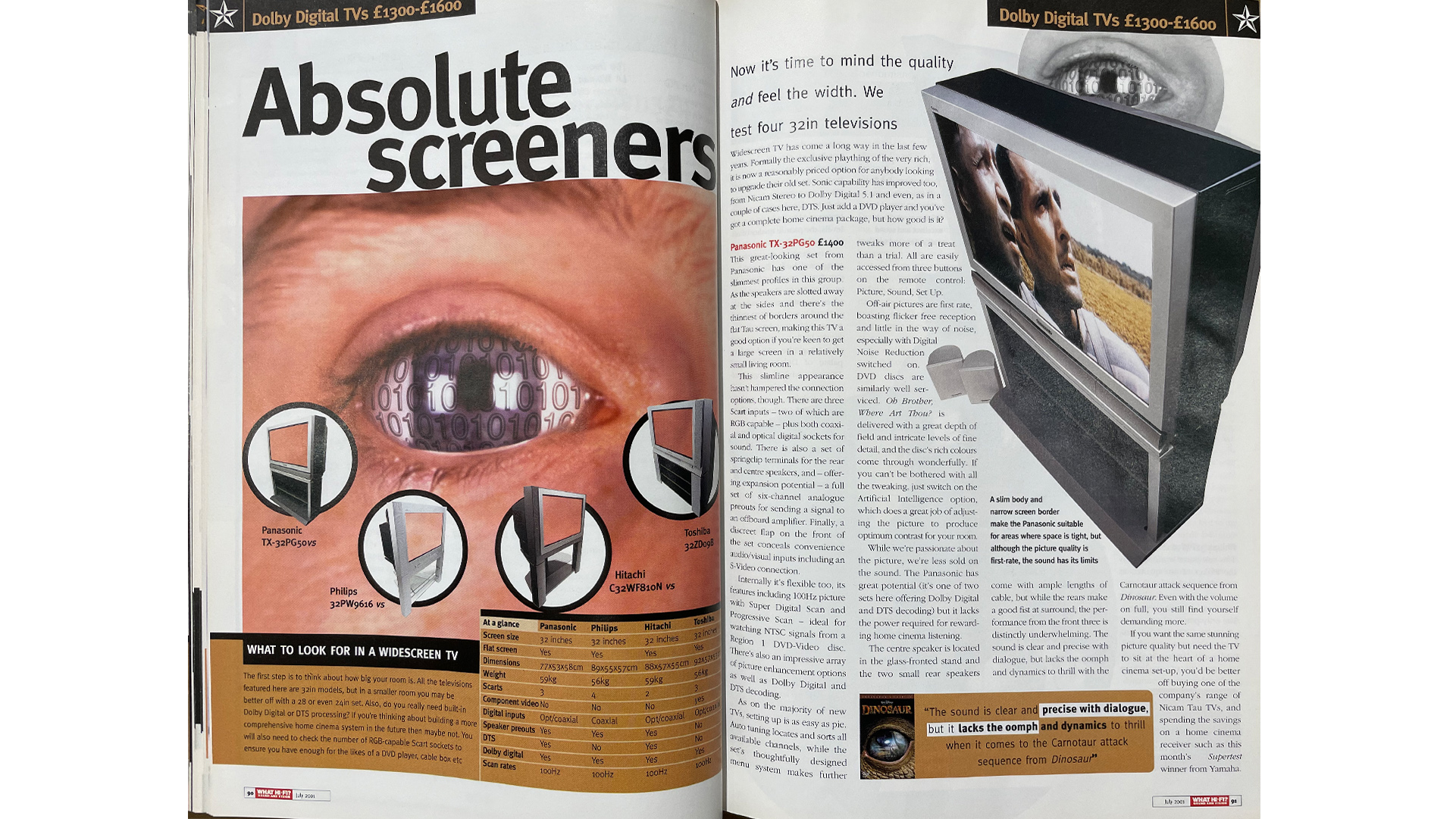
It’s funny how time plays tricks on us. I had my first stint on What Hi-Fi? at the turn of the century, when I served as legendary brand-stalwart Andy Clough’s deputy for just over a year, before moving on to edit a couple of motoring titles for a decade or so. And, had you asked me before my latest trip down the memory lane of our archives, I could have sworn that What Hi-Fi? was already What Hi-Fi? Sound and Vision before I left after my first go around. Apparently not – though, of course, the matter would have been the subject of intense debate while I was still on brand, so to speak.
But Vision has always been important to What Hi-Fi?

But no: it was this, the July 2001 edition of the magazine, that was the first under the new masthead; and I was off driving a magazine for Jaguar Cars at that time.
As Cloughie says in his editor’s letter (above), one of the reasons for the change was that the brand had taken more and more home entertainment products into its remit over the previous few years – although, as most of my visits to the magazine’s archives have clearly shown, the visual side of the home entertainment industry was always something What Hi-Fi? had taken a serious interest in.
The decision to change things up then was possibly more to do with the closure of a sister title or two that struggled to survive on DVD players and projectors alone.
The 'Sound and Vision' subhead took pride of place for the best part of 15 years; the brand reverted to the cleaner, straight What Hi-Fi? again from the January 2016 edition. The reversion to type made sense to me: the masthead of the magazine was strong branding, after all – so to keep things as clean and simple as possible can only have helped. And it was hardly a secret that we covered all things audio-visual as well as hi-fi.
Another magazine I used to work on, Autocar, had dropped a previously added suffix – in this case “and Motor” (after incorporating said title) – with no great issue. And that, despite the fact that the word Autocar no longer really meant anything anyway by that point. It was, however, a strong brand, now with more than 125 years under its belt, and that certainly sufficed.
What Hi-Fi?, then, was returned to the original title, and the now iconic white out of red masthead, about eight or so years ago.
Always on the lookout for a bargain

The subject matter from 23 years past remains the regular reassuring Back Issues’ mix of the familiar and the nostalgic. We still make a point of seeking out the lower-priced bargains out there, of course – though our cut off point now must be comfortably north of 2001’s £200, sadly.
Where, though, a loudspeaker from 2001 could easily stand in an identification parade and not be picked out as the obvious antique, the same cannot be said for the TVs on test.
The growth of the large-screen TV

While we certainly still wax on about the whopping screen acreage of enormous tellies, back in July 2001, the standfirst on our large-screen Dolby Digital TV tests (£1300-£1600) rather reveals the change that 23 years has brought: “Now it’s time to mind the quality and feel the width. We test four 32in televisions.”
The best part of a quarter of a century later, you can be the proud owner of a TV with more than double the screen size of those old giants, and for less money – even without taking inflation into account. What’s more, the only reason a 2024 65in set would be a two-man lift is because it’s too wide to pick up easily on your own. The turn-of-the-century CRT television? Take it from me, you would be looking for a third pair of hands to make that lift anything like comfortable.
Mind you, they could house speakers of a decent size – some things, then, are taking quite some time to get caught up in today’s TV tech.
MORE:
The best soundbars you can buy right now
We've built a brilliant vinyl and streaming hi-fi system powered by Mission and Wharfedale
Samsung’s new S95D TV takes OLED to places it has never been before







